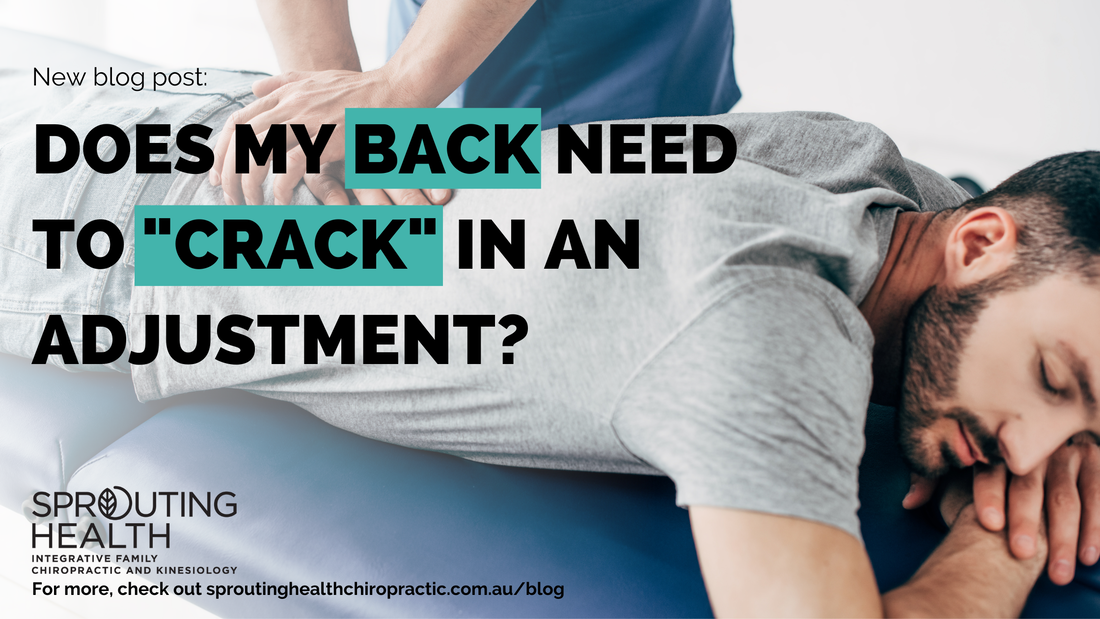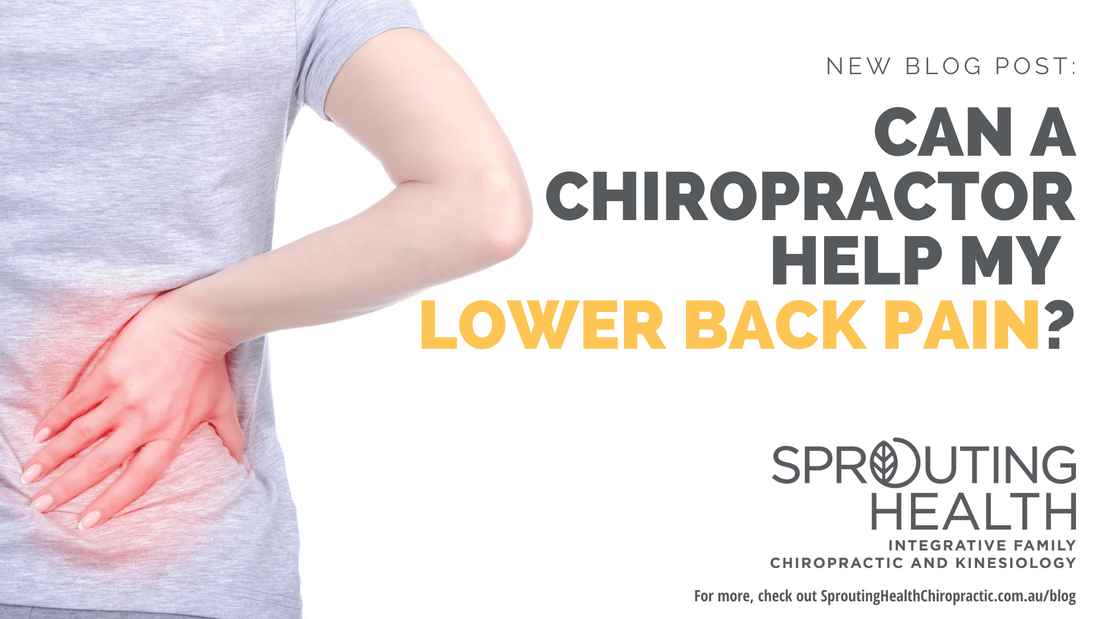|
Do we need “CRACK” to deem a successful chiropractic adjustment? Many practice members have enquired about the audible sound when a chiropractor performs an adjustment. In our previous blog, we spoke about the mechanism of how the sound or cavitation was being produced. Moving forward leaves us with the question “is the cavitation essential for an adjustment to be deemed as effective and therapeutic?” We have an answer for this common misconception. It is important to note the chiropractic adjustment has an impact on our nervous system.(1) Although more research needs to be done to have a better understanding of the physiological mechanism, there are biomechanical markers we can measure pre and post adjustment, ensuring adjustment is successful. Most chiropractors utilise neurological testing as their objective outcome measures.(2) These including fine touch sensitivity (pain), manual muscle strength and deep tendon reflex testing.(2) Research suggests that the sound of an audible release does not necessarily indicate that the appropriate reflexes are stimulated.(3) It suggests the greatest therapeutic benefit of the cavitation (sound) may not be physiological in nature but rather psychological.(3) The cavitation could have a powerful placebo effect on both the patient and practitioner.(3) Some people expect to hear a “cracking” sound from their treatment and interpret this sound as a sign of a successful adjustment. When the expectation is not fulfilled, it could place a negative effect on the clinical outcome. At Sprouting Health, we perform a thorough examination for each practice member and a reassessment within a certain time frame. This is to make sure we are measuring health and results objectively rather than heavily focusing on joint cavitation. We focus on very gentle means to help you reach your health goals. If you are interested in how chiropractic may benefit you, feel free to have a chat with our friendly staff members anytime. REFERENCES
1. Wirth B, Gassner A, De Bruin ED, Axén I, Swanenburg J, Humphreys BK, et al. Neurophysiological effects of high velocity and low amplitude spinal manipulation in symptomatic and asymptomatic humans: a systematic literature review. Spine. 2019;44(15):E914-E26. 2. Hinton PM, Randall McLeod D, Broker B, MacLellan CE. Outcome measures and their everyday use in chiropractic practice. The Journal of the Canadian Chiropractic Association. 2010;54(2):118. 3. Bakker M, Miller J. Does an audible release improve the outcome of a chiropractic adjustment? The Journal of the Canadian Chiropractic Association. 2004;48(3):237.
0 Comments
Low back pain is a common condition, you have around 40% chance you will have this at some point in your life (1) and it is one of the leading causes of disability globally (2). For an individual, low back pain causes limitations to day to day function, impacts mental health, can result in financial hardship and reduces quality of life (3). Do you or a loved one experience low back pain? This is an important article that could make the world of difference to you. “Between 1996 and 2016, health care spending for low back pain and neck pain consistently ranked among the top 5 conditions in the US” (4) In current research there is an association between trunk muscle strength, balance and endurance with lower back pain. (5,6) Low levels of trunk muscle strength may increase the risk of lower back pain or may also be caused by low back pain through altered activities and/or movements to try to avoid potential pain. (7-9) Our ability to sustain prolonged or repetitive positions or movements can be affected by low back pain. It can also alter neuromuscular system factors that can influence balance as well. (10,11) In a recent research study, they were looking at active duty US military personnel with low back pain. In this particular study four weeks of chiropractic care resulted in improvements in strength, endurance and balance. There was also moderate short term improvement in low back pain intensity and disability, it also facilitated return to normal functional capacity comparing to the control group who didn’t receive chiropractic care (12). So chiropractic may be a viable option for low back pain management. If you want to find out if chiropractic may help manage low back pain for you or your loved ones, have a chat with one of our chiropractors to see how they can assist. “Strength, endurance and balance is vital to our overall functional health” REFERENCES 1.Hoy D, Bain C, Williams G, March L, Brooks P, Blyth F, Woolf A, Vos T, Buchbinder R. A Systematic Review of the Global Prevalence of Low Back Pain. Arthritis Rheum. 2012;64:2028-37. 2. Vos T, Barber RM, Bell B, Bertozzi-Villa A, Biryukov S, Bolliger I, Charlson F. Global, regional, and national incidence, prevalence, and years lived with disability for 301 acute and chronic diseases and injuries in 188 countries, 1990–2013: a systematic analysis for the Global Burden of Disease Study 2013. Lancet. 2015;9995:743-800. 3. Froud R, Patterson S, Eldridge S, Seale C, Pincus T, Rajendran D, Fossum C, Underwood M. A systematic review and meta-synthesis of the impact of low back pain on people’s lives. BMC Musculoskeletal Disord. 2014;15:50. 4.Dieleman JL, Cao J, Chapin A, et al. US health care spending by payer and health condition, 1996–2016. JAMA 2020;323:863–884. 5. Wunderlin S, Roos L, Roth R, et al. Trunk muscle strength tests to predict injuries, attrition and military ability in soldiers. J Sports Med Phys Fitness 2015;55:535–543. 6. Honkanen T, Kyro ̈ la ̈ inen H, Avela J, Ma ̈ ntysaari M. Functional test measures as risk indicators for low back pain among fixed-wing military pilots. J R Army Med Corps 2017;163:31–34. 7.Steele J, Bruce-Low S, Smith D. A reappraisal of the de- conditioning hypothesis in low back pain: Review of evi- dence from a triumvirate of research methods on specific lumbar extensor deconditioning. Curr Med Res Opin 2014; 30:865–911. 8. Evans K, Refshauge KM, Adams R. Trunk muscle endur- ance tests: Reliability, and gender differences in athletes. J Sci Med Sport 2007;10:447–455. 9. de Sousa CS, de Jesus FLA, Machado MB, et al. Lower limb muscle strength in patients with low back pain: A systematic review and meta-analysis. J Musculoskelet Neuronal Interact 2019;19:69–78. 10.Ham YW, Kim DM, Baek JY, et al. Kinematic analyses of trunk stability in one leg standing for individuals with re- current low back pain. J Electromyogr Kinesiol 2010;20: 1134–1140. 11. Lee DC, Ham YW, Sung PS. Effect of visual input on normalized standing stability in subjects with recurrent low back pain. Gait Posture 2012;36:580–585. 12.Kamper, S.J., Logan, G., Copsey, B., Thompson, J., Machado, G.C., Abdel-Shaheed, C., Williams, C.M., Maher, C.G. and Hall, A.M., 2020. What is usual care for low back pain? A systematic review of health care provided to patients with low back pain in family practice and emergency departments. Pain, 161(4), pp.694-702. We have all heard that tummy time is important for our children, but not everyone is sure why it is such a big deal. We have many parents bringing their infants in saying that they do not like the tummy time position. This is often compounded by our busy lifestyles that do not accommodate spending the time down on the ground with our little ones. (1-2) The World Health Organisation recommends up to 30 minutes tummy time a day for infants under the age of 1. (3) A study released this year from the University of Wollongong highlighted the importance of tummy time in the development of our children. It was found to help with a number of developmental domains including motor development, social communication and cognition. (1) This study showed that infants who had more regular tummy time had greater locomotion and achieved milestones, such as rolling over, crawling, sitting, pulling to stand earlier than their peers who had less tummy time. (1) A significant positive association was also found in communication up to the age of 1 year and cognition (problem solving) up to the age of 2 years. (1) So, what can you do if you and your child is struggling with tummy time? To start with, make sure that you have something to engage your child with while they are doing their tummy time; break out the toys, or even better, get down there with them and engage. (2) It has been reported in observational studies that chiropractic care can be effective in helping you and you baby achieve your tummy time milestones. More studies are needed in this area however the 2019 study’s findings indicate that, on average, the changes observed by mothers were positive and may be clinically relevant. (4) If your baby continues to have trouble with tummy time, please contact us to see how we might be able to help you. As we age, our body and nervous system changes… these changes can include memory loss and difficulty carrying out tasks of daily living including dressing, bathing and cooking. Due to the decline and changes in the nervous system, we also see an increase in the rate of falls (Tinetti and Kumar, 2010). Studies have also shown that falls have a rising frequency in the elderly population, especially after 75 years of age (Gryfe, Amies & Ashley, 1977). A randomized control trial by Holt et al. (2016) studied the effect of chiropractic care on sensorimotor function compared with no intervention. A range of outcome measures were assessed included proprioception (ankle joint position sense), postural stability, sensorimotor function (stepping reaction time), multisensory integration (sound-induced flash illusion) and health related quality of life. Improvements were seen in sensorimotor function and multisensory integration which is associated with fall risk. The physical component of quality of life also improved compared with the control group. Further research is needed to investigate the mechanism of the observed changes in this study. Chiropractic care can help older people to be more active, more independent in carrying out tasks of daily living (Weigel et al., 2014) and increase sensorimotor function which can affect fall risk (Holt et al., 2016). If you or someone you know is wanting to see if you can maintain your health and independence as you are ageing, please get in contact with our practice as we would love to see if we can help. References
Gryfe, C.I., Amies, A. and Ashley, M.J., 1977. A longitudinal study of falls in an elderly population: I. Incidence and morbidity. Age and ageing, 6(4), pp.201-210. Holt, K.R., Haavik, H., Lee, A.C.L., Murphy, B. and Elley, C.R., 2016. Effectiveness of chiropractic care to improve sensorimotor function associated with falls risk in older people: a randomized controlled trial. Journal of manipulative and physiological therapeutics, 39(4), pp.267-278. Tinetti, M.E. and Kumar, C., 2010. The patient who falls:“It's always a trade-off”. Jama, 303(3), pp.258-266. Weigel, P.A., Hockenberry, J., Bentler, S.E. and Wolinsky, F.D., 2014. The comparative effect of episodes of chiropractic and medical treatment on the health of older adults. Journal of manipulative and physiological therapeutics, 37(3), pp.143-154. |
AuthorBlogs by the team at Sprouting Health Archives
July 2024
Categories |





 RSS Feed
RSS Feed
